Transform Your small bedroom design with little natural light
Table of Contents
small bedroom design with little natural can seem daunting, but with the right strategies, you can create a comfortable and functional retreat that feels spacious and inviting. Whether you’re dealing with a basement bedroom, a windowless interior, or simply a space that doesn’t receive much sunlight, this comprehensive guide will help you maximize every square foot while brightening your sanctuary.
Understanding the Challenge: Why Small, Dark Bedrooms Need Special Attention
Small, low-light bedrooms face a double challenge. A lack of space can make rooms feel cramped, while insufficient lighting can create a claustrophobic atmosphere that impacts mood and function. Research shows that poorly lit spaces can impact sleep quality, circadian rhythms, and overall health.
The key lies in understanding how light, color, and space interact. Natural light makes any room feel larger and more welcoming, so when it’s absent, we need to compensate with artificial lighting solutions and design choices that create the illusion of lightness and spaciousness.
Popular Design Styles Best for small bedroom design with little natural light

Scandinavian Minimalism
Scandinavian design is characterized by small bedrooms with little natural light, as it emphasizes light colors, clean lines, and functional furniture. This style uses white, light gray, and natural wood tones to create a sense of spaciousness even in small spaces.
Key elements include:
- Light wood furniture
- White or cream bedding
- Minimalist decorative accessories
- Multifunctional storage solutions
Modern Minimalism
Modern minimalism takes a “less is more” approach, which is ideal for small, dark bedrooms. By reducing visual clutter and focusing on essential pieces, you’ll create a sense of spaciousness.
Sleek Modern Design
For those who prefer a luxurious aesthetic, sleek modern design is an ideal choice for small, dark bedrooms when executed carefully. The secret lies in using reflective surfaces and metallic accents to bounce available light around the room.
Sleek Industrial Design
Industrial design works surprisingly well for small bedrooms with limited natural light by embracing space constraints and turning them into distinctive elements. Exposed brick walls, metal fixtures, and strategic lighting can create a cozy, loft-like atmosphere.
Maximize Space and Comfort in Your Dark Small Bedroom

Vertical Storage Solutions
When floor space is limited, consider vertical design. Wall-mounted shelving, tall, narrow cabinets, and floor-to-ceiling storage units draw the eye upward, creating the illusion of height while maximizing storage capacity.
Versatile Furniture
Each piece of furniture should serve multiple purposes in a small bedroom. Consider:
- Ottoman storage benches at the foot of the bed
- Nightstands with built-in charging and storage units
- Beds with built-in drawers or hydraulic storage units
- Floating desks that can be used as dressing tables
Strategic Furniture Placement
- Position your bed to maximize flow and available light. If you have any natural light, adjust the angle of your furniture to avoid blocking it. Create clear pathways and avoid pushing all furniture against the walls, which can make spaces appear smaller.
The Magic of the Mirror
- Mirrors are essential design tools for small bedrooms with limited natural light. They reflect available light and create the illusion of a larger space. Consider:
- Large floor-standing mirrors in corners
- Mirrored closet doors
- Decorative mirrored wall panels
- Mirrored furniture pieces
Color combinations that promote relaxation and radiance
Light and bright foundations
Start with light base colors that reflect available light:
- Pure white and ivory for walls
- Light gray and beige for large furniture pieces
- Cream and ivory for bedding and curtains
Warm accent colors
Add warmth without darkening the space:
- Soft pale pink
- Warm yellow and buttery shades
- Light peach and coral
- Sage green and pale blue
The power of monochromatic colors
Using contrasting shades from the same color family adds depth without visual distraction. A monochromatic approach with light shades can make a small bedroom with limited natural light feel cohesive and spacious.
Strategic Dark Touches
While most of your color palette should be light, strategic dark touches add a touch of sophistication:
- One dark wall behind the headboard
- Dark picture frames or artwork
- Pillows or blankets in rich colors
Lighting Ideas to Create the Perfect Atmosphere
Multi-Layered Lighting Style
Successfully designing a small bedroom with limited natural light requires multiple light sources:
Ambient Lighting: Provides all-around illumination
- Recessed ceiling lights with light control switches
- Pendant lights or chandeliers
- Track lighting systems
Task Lighting: Functional lighting for specific activities
- Adjustable bedside reading lamps
- Under-cabinet lighting for closets
- Desk lamps for work areas
Accent Lighting: Creates a distinctive atmosphere and highlights features
- LED strip lights behind the headboard
- Wall sconces for subdued lighting
- Table lamps with warm bulbs
Improving Natural Lighting
Maximize available natural light:
- Use sheer curtains instead of heavy drapes
- Install blackout curtains to provide privacy while allowing light in
- Place mirrors so that they reflect natural light throughout the room.
- Keep windows clear and unobstructed
Artificial Lighting: Light Temperature
Choose the appropriate color temperature for different times of the day Today:
- Cool white (4000-5000 Kelvin) for productivity during the day
- Warm white (2700-3000 Kelvin) for relaxation in the evening
- Smart daylighting
Common Mistakes in Designing Small, Dark Bedrooms and How to Avoid Them
Mistake 1: Using Overhead Lighting Only
Relying solely on strong overhead lighting creates unattractive shadows and doesn’t provide enough illumination for all activities.
Solution: Use layered lighting with multiple light sources at different heights.
Mistake 2: Choosing Dark Colors to Darken Space
Many believe that dark colors add a sense of warmth to a room, but in designing small bedrooms with limited natural light, dark colors can make spaces feel cramped.
Solution: Use light colors, and use dark shades sparingly.
Mistake 3: Overcrowding with Furniture
Putting too much furniture into a small space obstructs the flow of light and creates visual clutter.
Solution: Choose less-used pieces and leave space between pieces.
Mistake 4: Ignoring vertical space
Focusing solely on floor space misses valuable opportunities for storage and design.
Solution: Use walls for storage and decor, drawing the eye upward.
Mistake 5: Poor storage planning
Poor storage leads to clutter, making small spaces appear even smaller and more chaotic.
Solution: Plan your storage solutions before decorating, and make sure everything has a place.
Advanced Design Techniques for Small, Dark Bedrooms

Create Visual Beauty Without Clutter
Use Texture and Patterns Smartly:
- Patterned Bedspreads and Pillows
- Soft Wallpaper on a Feature Wall
- Natural Materials Like Woven Baskets and Wooden Accessories
The Psychology of Space
Understanding how design elements affect perception helps you control the feel of space:
- Horizontal lines create a sense of spaciousness
- Vertical elements add height
- Light colors stand out while dark colors recede
Integrate Technology
Designing a modern small bedroom with limited natural light can benefit from smart home technologies:
- Automated lighting systems that adjust throughout the day
- Smart mirrors with built-in lighting
- Hidden charging stations and cord management
Seasonal Adjustments for Year-Round Comfort
Strategies for Winter Brightness
During the darker months, enhance your lighting plan:
- Add table lamps in warm colors
- Add light-reflecting metallics
- Use color White or light-colored bedspreads
Summer Lighting Management
When natural light is more plentiful:
- Install blackout curtains for better sleep
- Adjust artificial lighting to complement natural light
- Consider plants that thrive in low-light conditions
Budget-Friendly Solutions for Small, Dark Bedrooms
DIY Lighting Projects
- Make custom pendant lights from affordable materials
- Install peel-and-stick LED strips for accent lighting
- Make lampshades from light-colored fabrics
Affordable Mirror Solutions
- Use several small mirror to create a display wall
- Shop at thrift stores for unique mirrors
- Consider adhesive mirror tiles for affordable wall coverings
Paint and Color Updates
- A new coat of paint is one of the most cost-effective changes
- Use paint swatches to test colors in different lighting conditions
- Consider painting the ceiling a lighter shade than the walls to add height
Conclusion
Transforming a small, dimly lit bedroom doesn’t have to be a challenge. By implementing strategic lighting solutions, choosing the right color palettes, and utilizing space efficiently, you can create a beautiful and functional haven that feels spacious and airy.
Remember, the success of a small, dimly lit bedroom design depends on balance. Combine multiple light sources, use bright colors with strategic accents, and choose versatile furniture. Most importantly, add a personal touch to your space with items that make you feel happy and promote restful sleep.
Ready to transform your dark, small bedroom into the haven of your dreams? Start with one element—perhaps updating the lighting or color palette—and go from there. Small changes make a big impact in small spaces.
We’d love to hear more about your bedroom transformation journey! Share your before and after photos in the comments below, or sign up for our newsletter for more expert design tips and inspiration delivered straight to your inbox.
Best Amazon Picks :
FAQs
What’s the best paint color for a small bedroom without windows?
A warm off-white or a very pale warm gray is best. Colors like “Cloud White” or “Pale Oak” reflect artificial light effectively, creating a cozy atmosphere. Avoid pure white, which can look washed out, and cool gray, which can look dull in low-light conditions.
How many light sources are appropriate for a small, dark bedroom?
Plan for at least 4 to 5 different light sources in a small bedroom with little natural light.. This should include overhead lighting, bedside lamps, accent lighting, and task lighting. The key is to create adjustable layers to suit different activities and times of day.
Can I use dark colors in a small bedroom without natural light?
Yes, but use them wisely. Consider a single dark wall behind the headboard, dark artwork, or richly colored textiles as accents. The rule is to use dark colors no more than 20% of the overall color scheme in a small, dark bedroom.
What size mirror is best for a small, dark bedroom?
Larger mirrors make a bigger impact than smaller ones. Consider a mirror that’s at least 24 inches long in one dimension. Floor-length mirrors (around 60 inches) are particularly effective because they reflect light from the floor to the ceiling and create the illusion of more space.
Should I use overhead lighting or just lamps in a small, dark bedroom?
Use both. Overhead lighting provides general lighting, while lamps create ambient and functional lighting. Install dimmer switches in overhead lighting to adjust the brightness throughout the day. This combination provides the flexibility needed to design a small bedroom with little natural light.
How can I make my small, dark bedroom feel less cramped?
Focus on vertical storage, keep hallways clear, use light colors, utilize multiple light sources, and place mirrors strategically. Also, avoid pushing all furniture against the walls; placing some pieces horizontally can make a room appear larger by creating depth and visual interest.
What’s the biggest mistake people make in small, dark bedrooms?
The most common mistake is using insufficient lighting with dark colors. Many believe that dark colors will make the space feel warm, but without enough natural light, small bedrooms can feel claustrophobic and cramped. Always prioritize light colors and multiple light sources.
Are there plants that can survive in a small bedroom with little natural light?
Yes! Consider planting low-light plants like snake plants, zombie plants, pothos, and peace lilies. These plants can survive in artificial light and may even improve air quality. Just make sure they get some artificial light daily, and don’t overcrowd your small space.
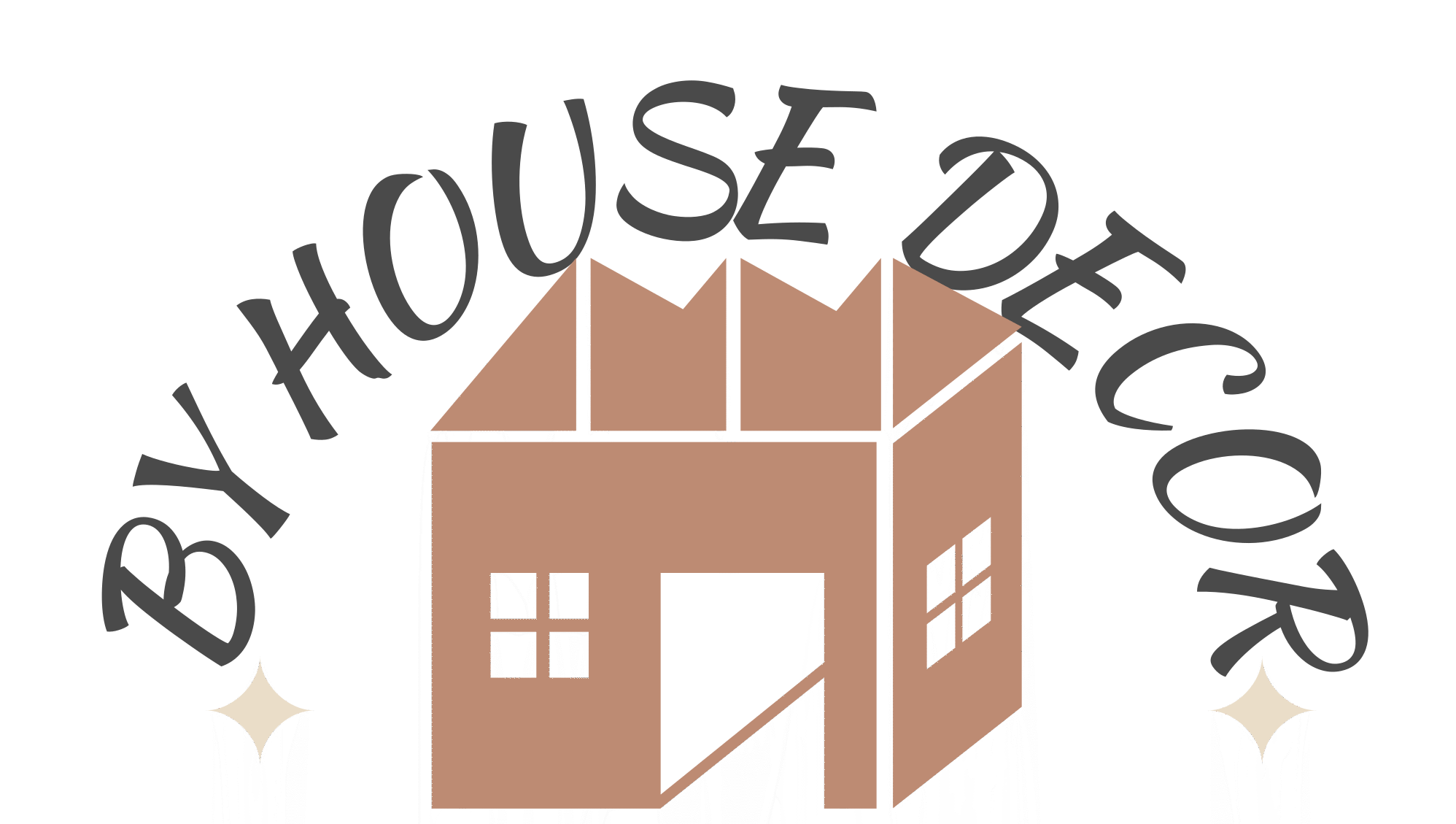

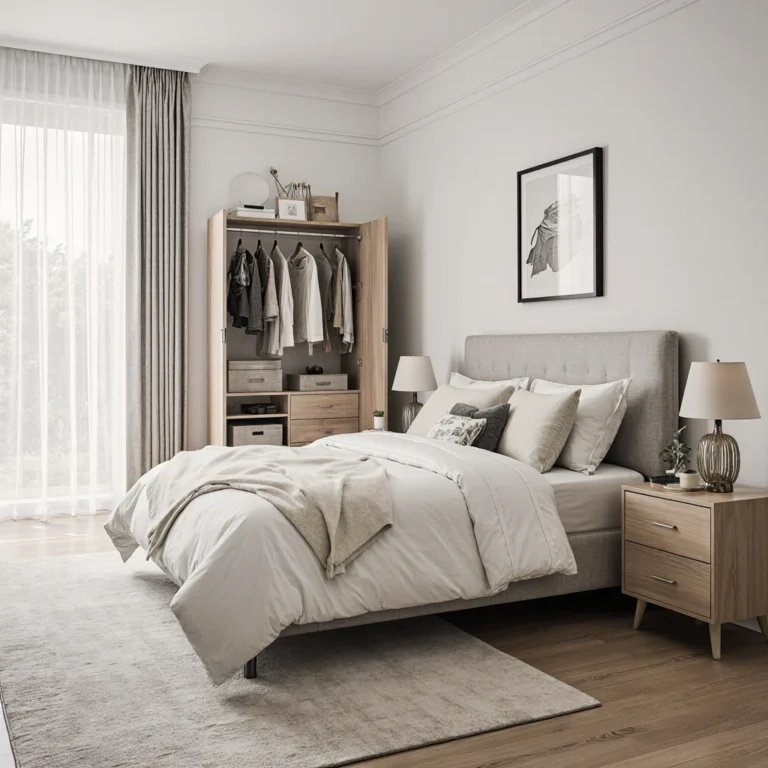
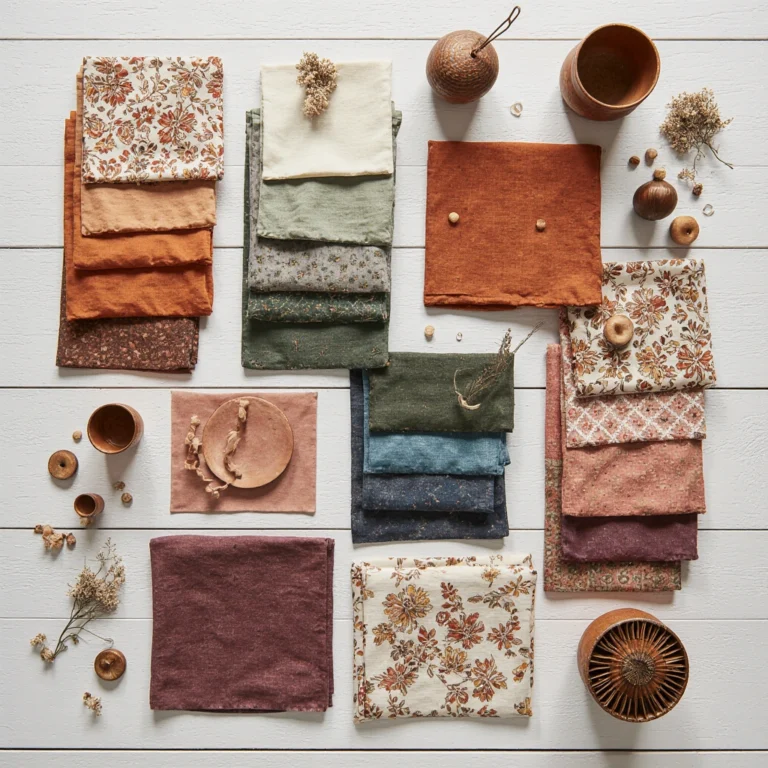
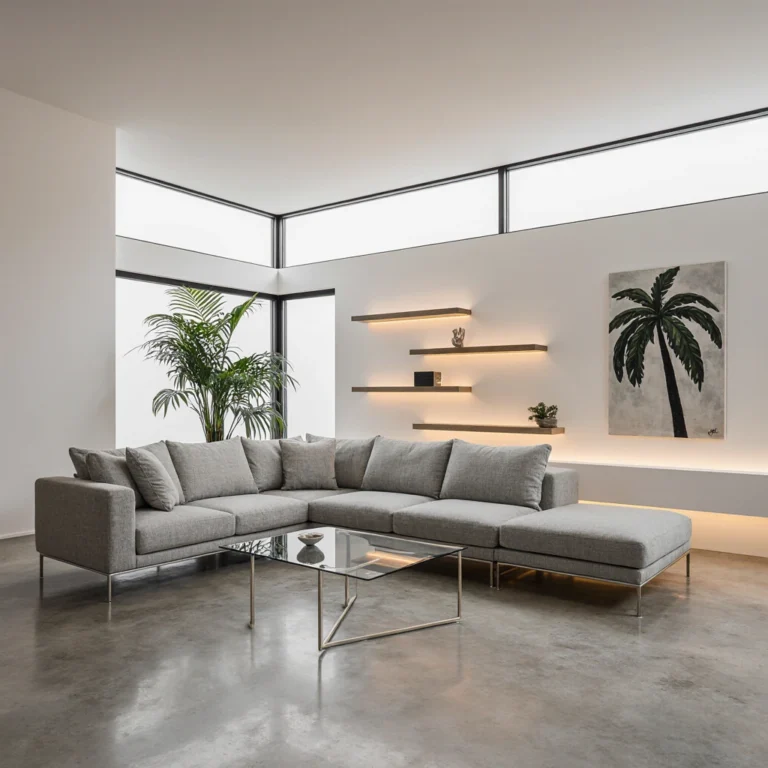
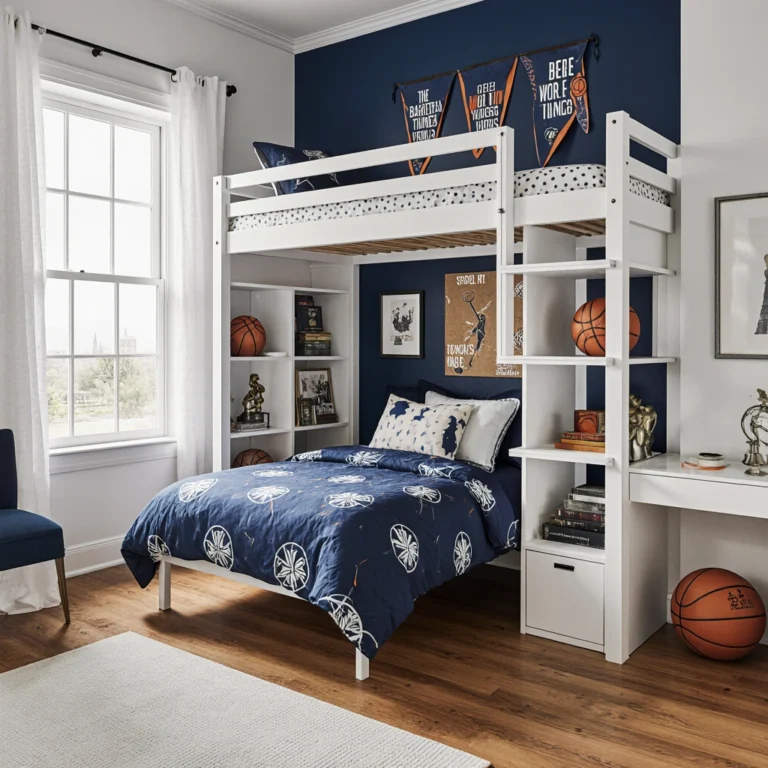
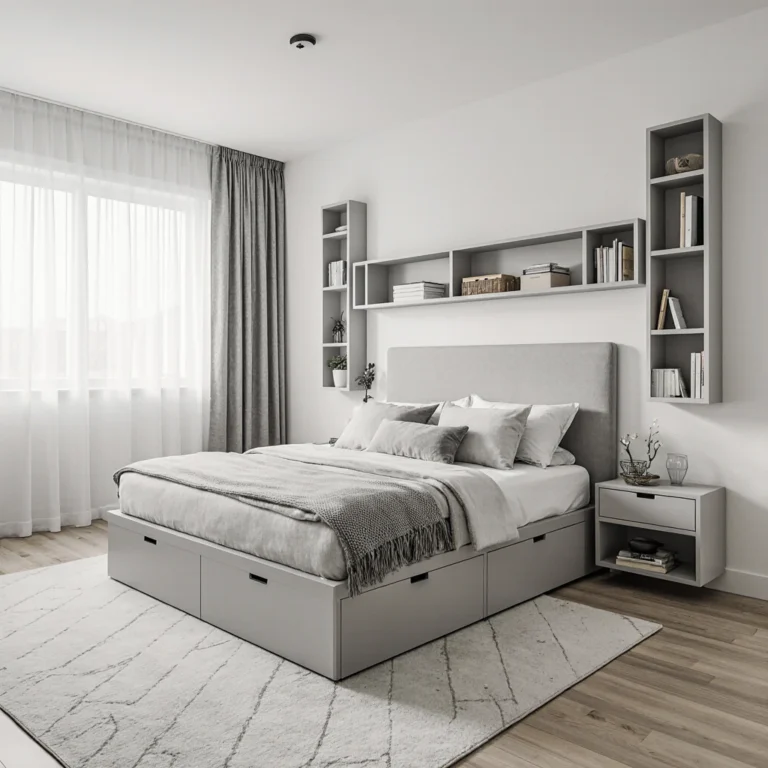
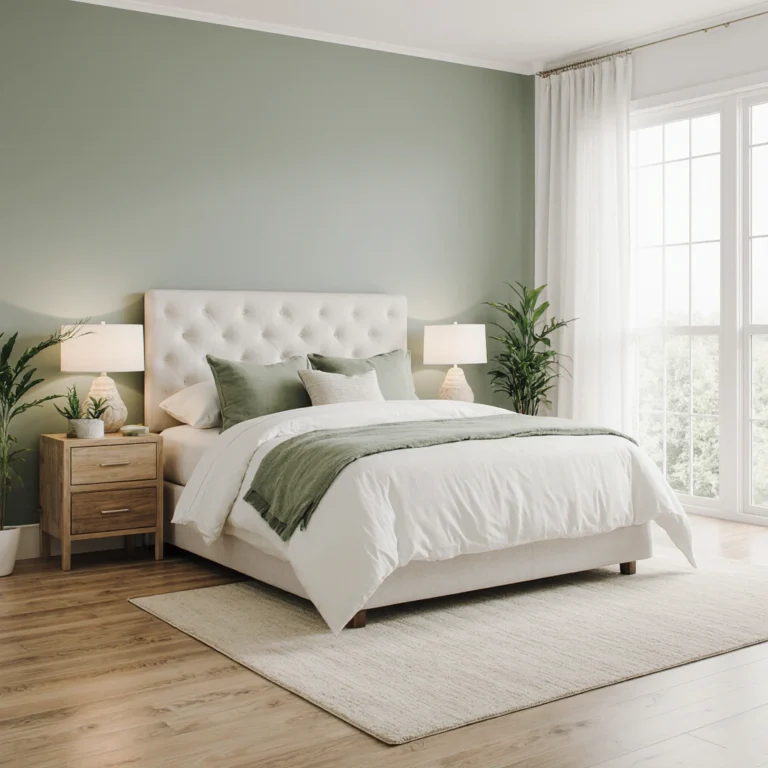
4 Comments